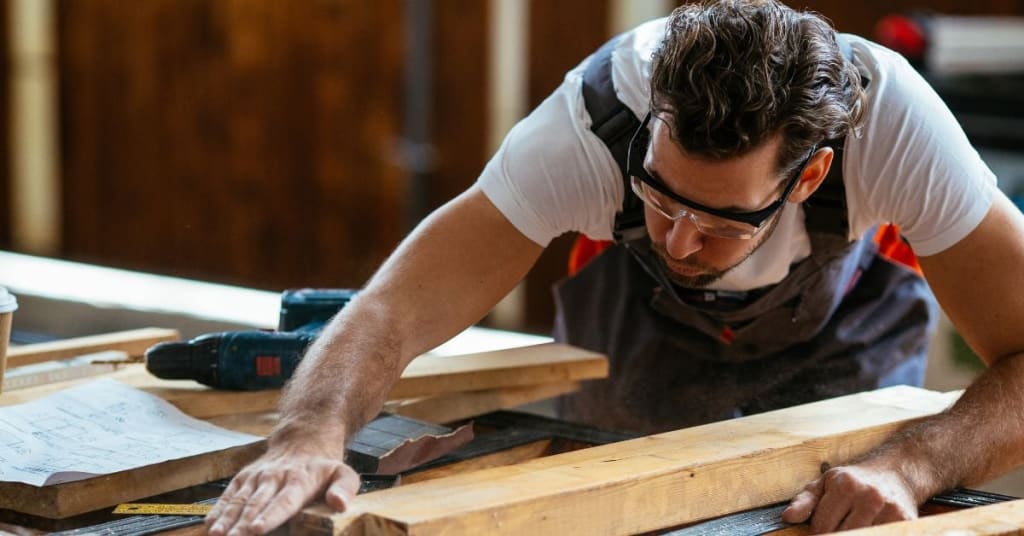How to Make a Custom DIY Picture Frame

Creating a custom DIY picture frame is a great way to personalize your space and add a unique touch to your favorite photographs, art, or memorabilia. Below is a comprehensive guide that includes the tools you will need, the raw materials, and step-by-step instructions to help you make your own picture frame.
On a time crunch or don't have all the tools? Don’t worry, Frame Destination lets you design your picture frames online from A-Z.
For Your Custom DIY Picture Frame You Will Need:
Tools
- Measuring tape or ruler
- Saw (a miter saw or hand saw with miter box)
- Sandpaper (medium and fine grit)
- Wood glue
- Clamps (optional but helpful)
- Paintbrush or a rag (for staining or painting)
- Hammer or nail gun
- Screwdriver
Raw Materials
- Wood (choose a type that suits your aesthetic; pine is a good option for beginners)
- Wood stain or paint (optional)
- Glass or acrylic sheet (cut to size)
- Backing board (e.g., MDF, cut to size)
- Small nails or brads
- Picture hanging kit (for mounting the frame on a wall)
- Picture frame tabs or points (for securing the back)
- Wood filler (optional, for filling nail holes)
Instructions
Step 1: Determine the Design and Size
Decide on the dimensions of the picture you want to frame. Add a margin for the frame itself; an additional 2-4 inches on each side is typical.
Measure and cut your wood to the desired length for each side of the frame. For a standard rectangular frame, you will need two pieces of equal length for the width and two for the height.
Step 2: Cut the Wood
Use a miter saw or hand saw with a miter box to cut the ends of each wood piece at a 45-degree angle. These miter cuts will allow the corners to fit together neatly.
Ensure that each pair of cuts creates a perfect right angle when assembled, forming the rectangle of your frame.
Step 3: Sand the Frame
Sand all pieces of wood with medium-grit sandpaper to smooth any rough edges.
Follow up with fine-grit sandpaper for a smooth finish that’s ready for paint or stain.
Step 4: Assemble the Frame
Apply wood glue to the mitered ends of your wood pieces.
Join the pieces together to form the frame, making sure all corners fit snugly.
Use clamps to hold the pieces together tightly as the glue dries. Optionally, you can reinforce the corners with nails or a nail gun.
Step 5: Finishing Touches
Once the glue is dry, remove the clamps and fill any gaps or nail holes with wood filler. Let it dry according to the product’s instructions and sand smooth.
Apply paint or stain to your frame as desired. Let it dry completely.
Step 6: Add the Glass, Artwork, and Backing
Clean the glass or acrylic sheet and carefully place it into the frame.
Insert your artwork or photograph, then add the backing board behind it.
Secure the backing in place using frame tabs or points. These can be pushed into the frame's edges to hold everything in place.
Step 7: Mount the Frame
Attach a picture hanging kit to the back of the frame according to the package instructions. This typically involves small screws and a wire that allows the frame to hang from a nail or hook on a wall.
Step 8: Display Your Custom DIY Frame
Hang your new custom DIY picture frame on a wall, or place it on a shelf or table. Adjust its position to best display your featured art or photo.
With these steps, you'll be able to create a beautiful and personalized picture frame that enhances your décor and showcases your artistic endeavors. Whether it's a treasured photo, a piece of art, or even a cherished keepsake, your DIY frame will add a touch of custom craftsmanship to your home.
FAQs
What type of wood is best for making a picture frame?
The best type of wood for making a picture frame depends on your specific needs and preferences. For beginners, pine is a great choice because it is easy to cut and sand, and it takes paint and stain well, making it versatile for various finishes.
For a more durable frame, hardwoods like oak or walnut are excellent options, though they can be more challenging to work with. Consider the overall aesthetic you desire and the environment where the frame will be displayed, as some woods can warp in humid conditions.
How can I ensure my frame corners fit perfectly?
To ensure that the corners of your frame fit perfectly, it’s crucial to make precise cuts. Use a miter saw for the best results, as it can provide clean, consistent angles. After cutting, dry-fit the pieces together to check the alignment before gluing.
If there are small gaps, you can adjust your cuts or use sandpaper to fine-tune the angles. When assembling, use clamps to hold the corners tightly together while the glue dries. This will help maintain alignment and ensure a snug fit.
Can I use regular glass for my picture frame, or is there a better alternative?
You can use regular glass for a picture frame, but it’s important to consider the alternatives and their benefits. Regular glass is inexpensive and offers good clarity, but it can be heavy and break easily. Acrylic sheets are a popular alternative because they are lighter and shatter-resistant, making them safer and easier to handle.
For enhanced UV protection and reduced glare, consider using specialty glass or acrylic, such as museum glass or anti-reflective acrylic, which protect artwork from fading and reduce reflections, enhancing the viewing experience. Choose based on your budget, safety concerns, and display needs.
Written by Mark Rogers
 Mark Rogers is the President and Co-Founder of Frame Destination. With over 20 years of experience in the field, Mark has become a leading authority on framing techniques and best practices, and has earned a reputation for his innovative approaches to custom framing and frame services for photographers and artists.
Mark Rogers is the President and Co-Founder of Frame Destination. With over 20 years of experience in the field, Mark has become a leading authority on framing techniques and best practices, and has earned a reputation for his innovative approaches to custom framing and frame services for photographers and artists.